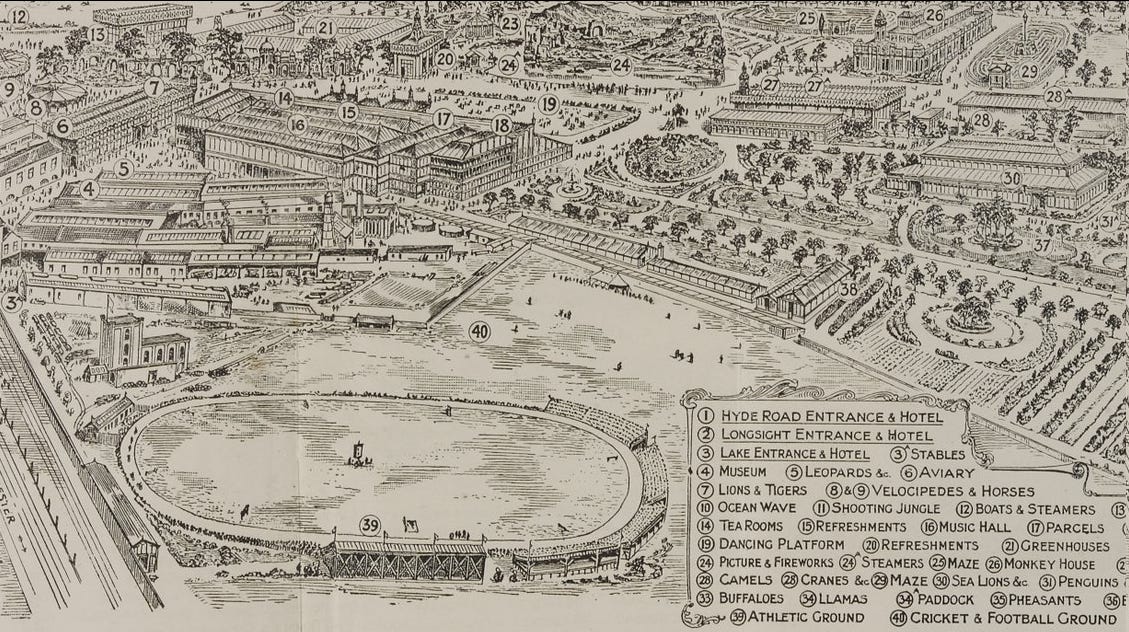The Birth of Football and the Origins of Manchester City
Part Two: Field of Dreams
This is where St Mark’s first played football.
Back in 1880 the undeveloped land in this picture was known as Jennison’s Field, named after George Jennison, the founder of the adjoining Belle Vue Zoological Gardens.
Jennison was an Anglican, and an active supporter of St Mark’s church in West Gorton. In May 1880 St Mark’s annual May Queen celebrations had taken place on the field. Six months later, on 13 November 1880, the young men of St Mark’s played their first recorded game of association football there.
The reasons St Mark’s created a football team are explored in a piece I published in September, Why Was The Club Created? But what the piece doesn’t explain is why the church created an association football team.
Manchester was a rugby city in 1880. Since 1878 only one club, Manchester Wanderers, had played under association rules. Formed by members of the Birch rugby club, Wanderers’ membership was drawn from the upper middle classes (captain James Strang earned £600 a year—roughly £300,000 a year today—at his father’s chemicals business).
Wanderers had made little effort to promote the association game in Manchester, instead preferring contests against well-heeled clubs from other cities and towns.
But St Mark’s game against Macclesfield Baptist on 13 November represented something new. This was the first time in Manchester that a team of largely working men had played under association rules.
The following Saturday three other Manchester sides played their first recorded games of association football. They too were made up of working men.
The Newton Heath Lancashire & Yorkshire Railway carriage works team played away to Bolton Wanderers reserves. Manchester Arcadians, whose formation had been announced on 1 September, also played their first recorded match, as did Clarence Association, which probably originated from the Clarence cotton mill in Stalybridge.
In the space of two weeks the number of association sides in the Manchester area had grown from one to five.
To understand why, we need to travel fifty miles north of Manchester, to a town that, for more than a year, had been gripped by a “football mania”.
You can subscribe for free, below, and have the latest stories sent straight to your inbox.
Part Two


